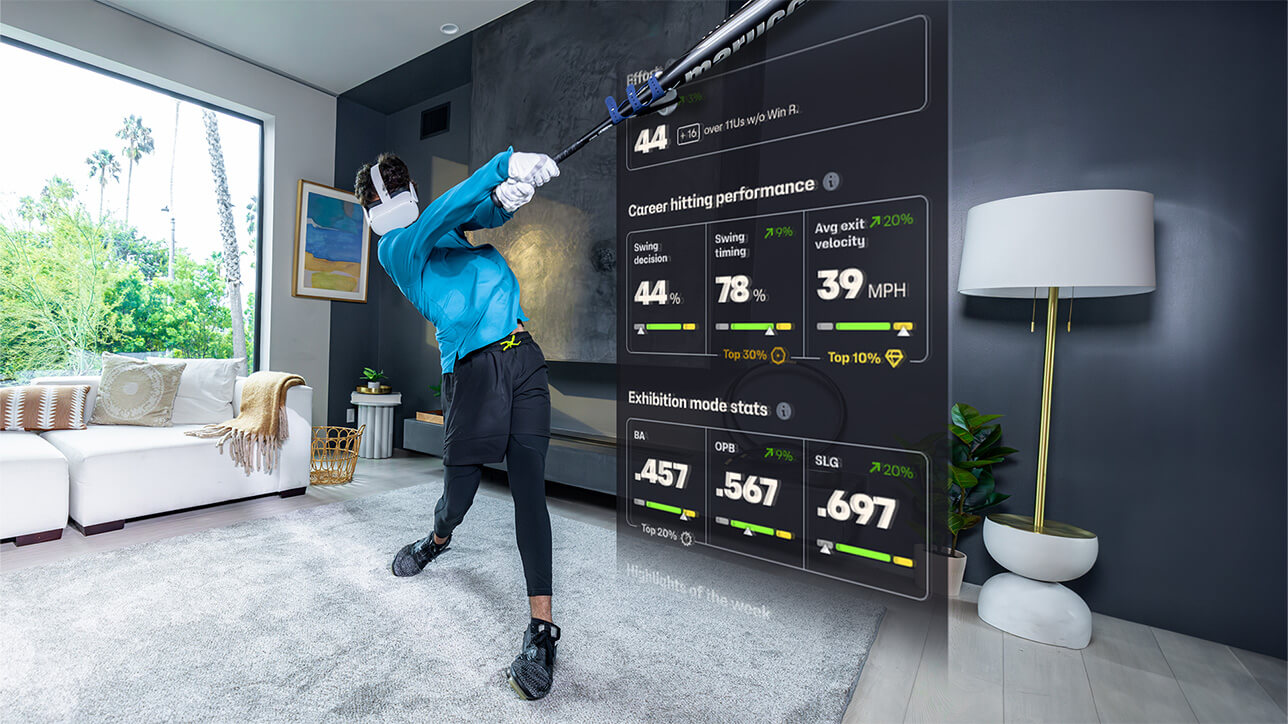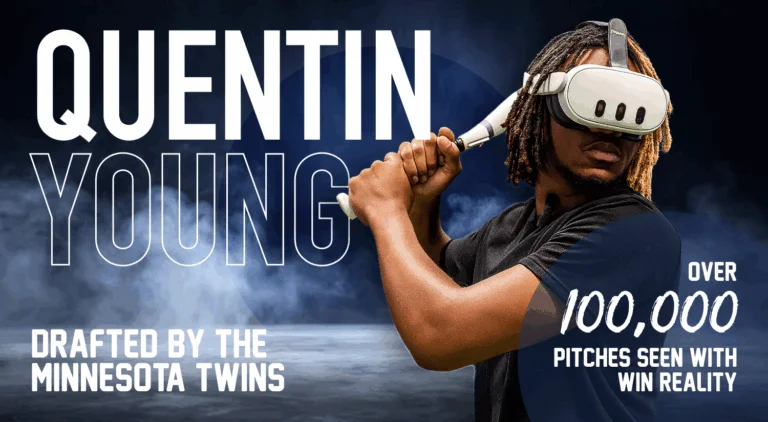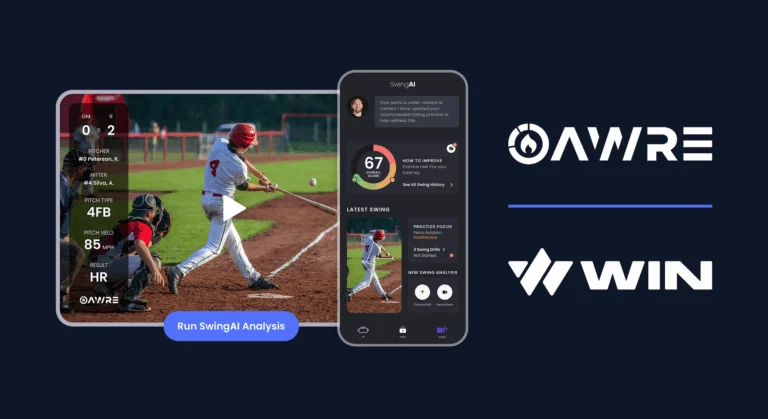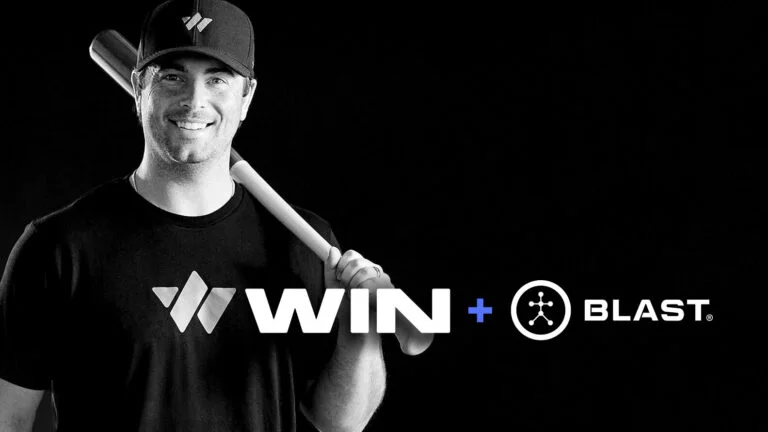Since baseball began, undoubtedly its most difficult training challenge has been replicating in-game pitching conditions for hitters to practice against. Pitching is a scarce resource that is too valuable to waste on batting practice. Consequently, as players we practice against coaches throwing 50% of game speed, take “simulated” at-bats against teammates in scrimmages, and try to stay fresh at local batting cages. All the while doing this, we hope that it will transfer to helping us in actual game environments.
While some of us may look great at our local batting cages, or against our coach’s lazily tossed batting practice, that doesn’t inherently mean that we’ll be able to make meaningful contact in a game situation. The skills acquired in these situations are markedly different than those required to succeed against in-game pitching. In fact, some skills learned in those practices may actually interfere with in-game success. Furthermore, these exercises rarely touch on skills development for strike zone discipline, or pitch type identification — skills that are crucial to real-world success. The ugly truth for hitters is this. For decades, we’ve practiced in ways that don’t create or transfer success to the actual batter’s box.
Enter virtual reality
Advances in Virtual Reality (VR) engineering, development, and applications, both in hardware and software have been extraordinary. It’s now possible for VR to create a completely immersive in-game baseball experience that does replicate reality. With WIN Reality, hitters can now step into a VR environment, load up a professional, college, or custom pitcher profile, and work on a laundry list of skills that will genuinely transfer to game situations. If there’s a specific kind of pitcher that gives you trouble, or who has a release point that’s particularly difficult to pick up, or who’s elite at pitch tunneling and masking the true identity of their pitches, VR can help, and even force hitters to develop new skills.
For years, technological advancements in baseball have largely helped pitchers gain an ever increasing advantage against hitters. But now, through VR, there’s a coming digital revolution for hitter development. By training in virtual environments, hitters can practice in life-like situations that transfer performance gains to the real-world. Individualized training sessions maximize a hitter’s ability to work on exactly what plagues them; and instantaneous feedback provides athletes with insight that is usually only available in professional organizations.
Additionally, VR gives hitters something that had previously been unavailable to them in the real-world — scalability. During an in-game situation, on average, a major league batter expects to see 15 pitches. If a player were to appear in every game during the regular season (162 games), that would mean they’d see approximately 2,430 pitches over the course of the year. For a high schooler who might play between 30–45 games during a season, the projected number of in-game pitches plummets to a range of 350–525 pitches seen. In both scenarios, there’s simply not enough real-world experience for players to learn from and improve. The amount of data generated from such a limited sample is too small to analyze and identify each batter’s training and development needs.
But with VR training and practice programs, a batter can see over 100 game-speed pitches in 15 minutes. That means in just over 6 hours of practice, a hitter can see as many pitches as a major league hitter does over the course of an entire season. In short order, a deep database on individual players can be built. That database can be analyzed, and unique development programs can be designed around everyone’s individual areas of weakness. For example, if a hitter can’t pick up a slider because of a pitcher’s ability to tunnel their repertoire, they can train in WIN Reality’s VR environment and specifically work in a program called Occlusion Exercises, to help acquire the skills needed to better identify pitch types with shockingly little information presented.
How does VR transfer to the real-world?
That question, should be answered by data, not opinion. Seven decades of data from increasingly sophisticated applications and scientific research, across numerous domains, say the answer is yes. And with WIN Reality’s expanding players database, the answer is overwhelmingly yes for training to hit a baseball. Players who train with their VR programs see long-term gains in pitch recognition, batting averages, OPS, and ultimately, team wins.
One of the best demonstrations of WIN Reality’s transferability is how well it replicates a known baseball phenomenon called the Times Through the Order Penalty (TTOP). On average, each time a pitcher moves through the batting order, they pay a penalty. The hitters perform better because every pitch is a new data point. Every at-bat is a learning experience, and as the game progresses, hitters transfer the sum of that knowledge to the next pitch, and their next at-bat. WIN Reality has replicated that real time information transfer through VR.
The data below shows the difference in outcomes between players using VR immediately prior to an at-bat, and those who don’t and go up the plate “blind”. The results are stunning.
WIN Reality’s VR training programs clearly have a great impact on hitters, and yields overwhelmingly positive results. Their Z/O swing ratio improved from ~2.55 to ~2.90; their batting average increased by ~35 points; and their OPS rose by ~50 points.

From an individual standpoint, VR training with it’s life-like simulations, against in-game pitching conditions, available anywhere in the world at any time is enormously exciting. Baseball executives and team management at all levels of the sport have reason for excitement too, because VR transfers to the real-world in the most important way of all — team wins.

Although a team’s Z/O ratio, on its own, does not guarantee wins, it’s impossible to ignore the relationship between the two. And logically, this makes sense. Baseball has historically been a low scoring affair. Thus, a team that can maximize its chances at swinging against pitches in the zone, where the most damage is done, will have more scoring chances than teams that routinely swing at waste pitches. And in the real-world, more scoring translates to more wins.
The science behind VR and transferability
We are our nervous system. Our nervous system learns through experience. The physical experience of learning occurs within the brain and peripheral nervous system through a series of interconnected neural networks. Successful adaptation to, and incorporation of experience can be viewed as the acquisition of skill sets. Some of them may be quite simple, and others more complex. But when we get good at them, we can perform them in increasingly automatic and effective ways.
Think about the act of learning to swing a bat. A new player must acquire complex information about hand placement, loading, and triggering a swing. But, as we practice the different steps, it all becomes easier, and eventually automatic. Players stop thinking about every step while in the batter’s box, and take the action instinctively. This is because over time, different parts of our nervous system have taken in trillions of bits of information and from them, developed the skills required to successfully swing a bat.
Through studies that utilized functional magnetic resonance imaging (fMRI), and electroencephalograms (EEG), we know that VR training environments activate the same regions of the brain that are activated by real-world experiences. Put another way, the brain’s learning response to VR experiences mimics the response to real-world stimuli. In many cases, it would seem either our brains can be tricked into thinking the VR simulation is in fact real, or alternatively, it simply doesn’t “care” where the experience is coming from.
It’s the science that makes VR training such as WIN Reality so exciting, and honestly, comforting. Hitters training in VR can be absolutely sure, beyond a doubt, that what they learn and practice in the simulations, will be directly transferred to actual games.
The future of baseball training
Baseball has been the early sports adopter of mathematical analysis, big data, and predictive modeling. Applications of these disciplines were resisted until their evangelists convinced the industry that their insights and benefits did transfer to the baseball field. VR is the next opportunity from science and high tech for baseball to leverage. The performance gains from implementing practice programs like WIN Reality’s series of exercises are too great to ignore. Those that become early adopters and exploiters of this exciting technology will gain a significant competitive advantage that transfers directly to the batter’s box.



